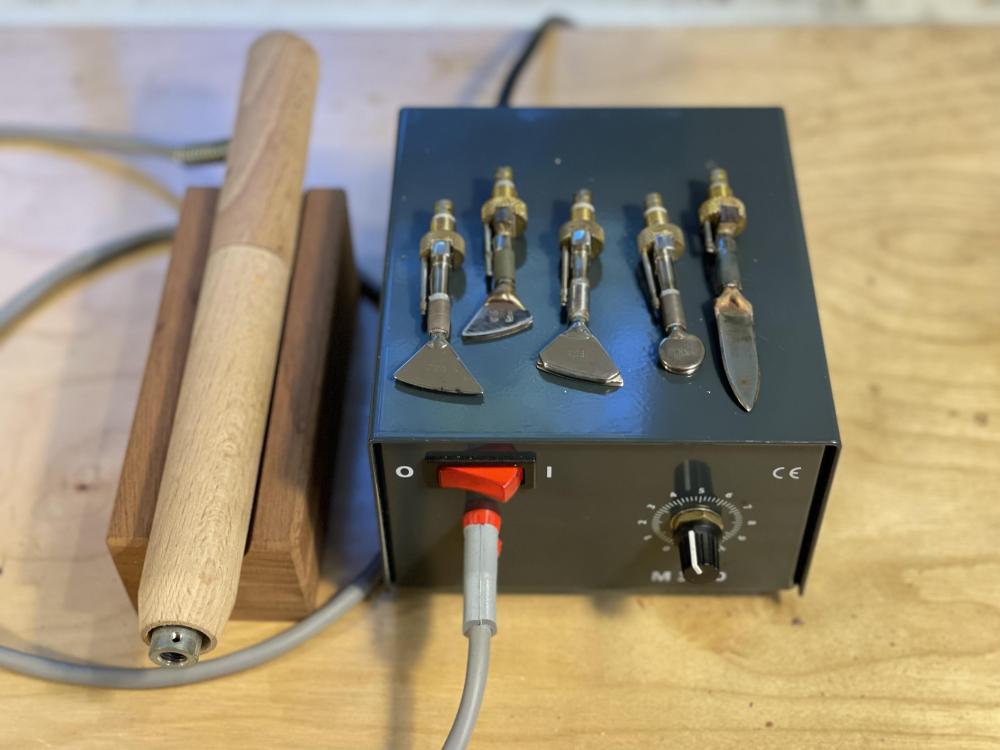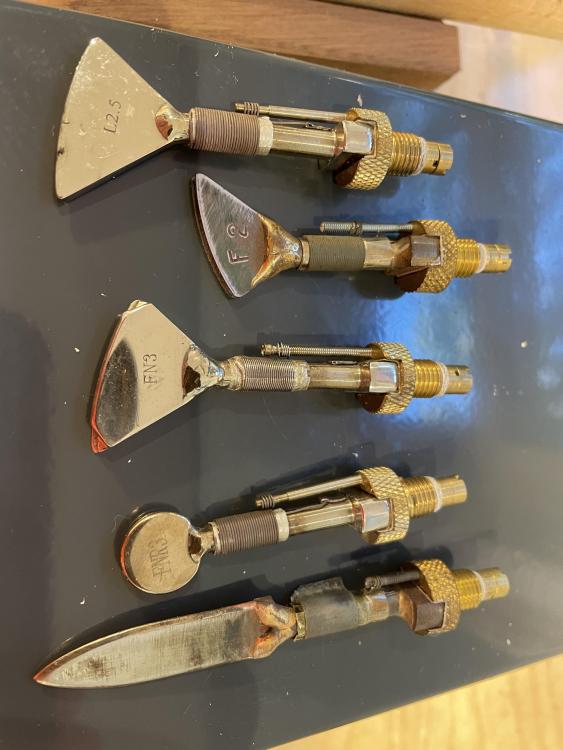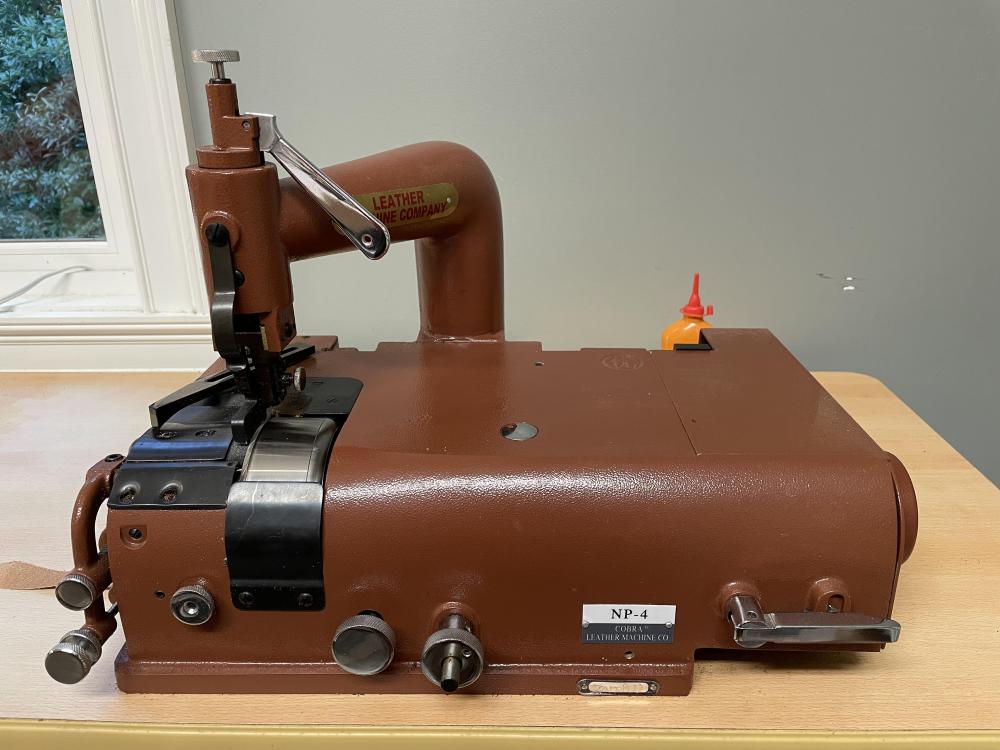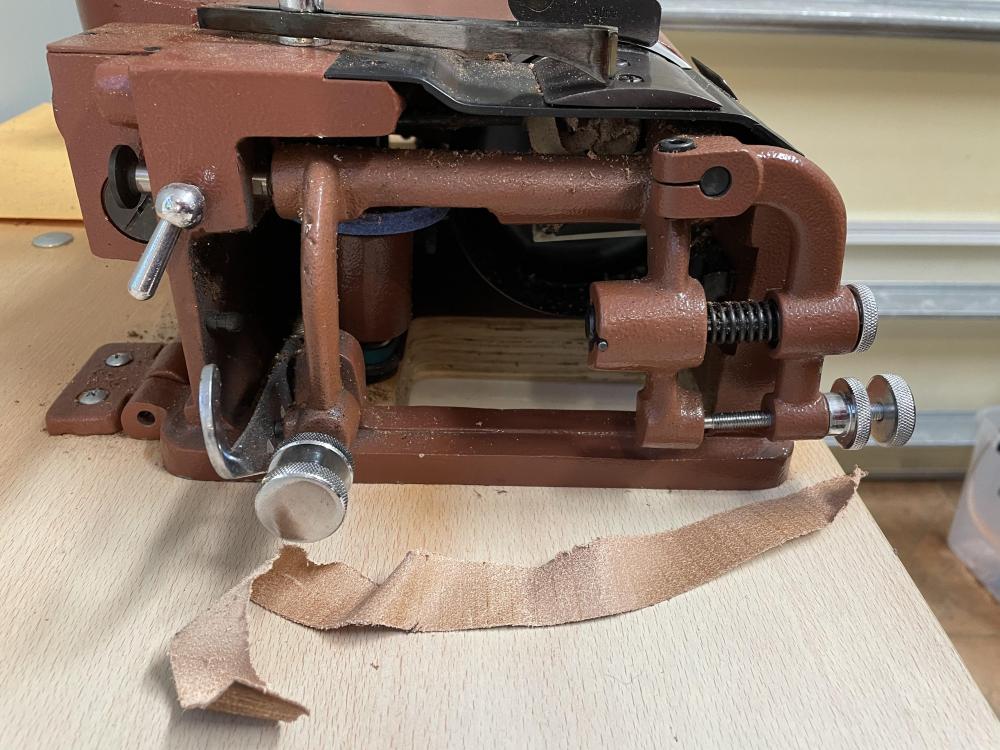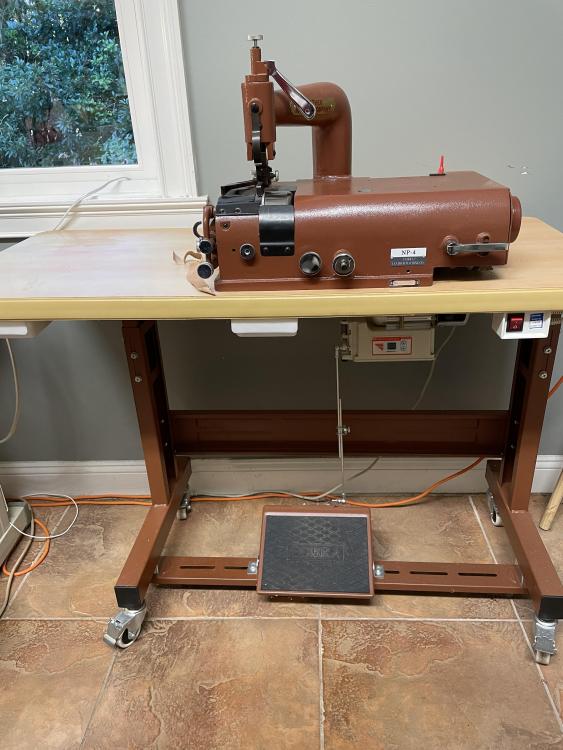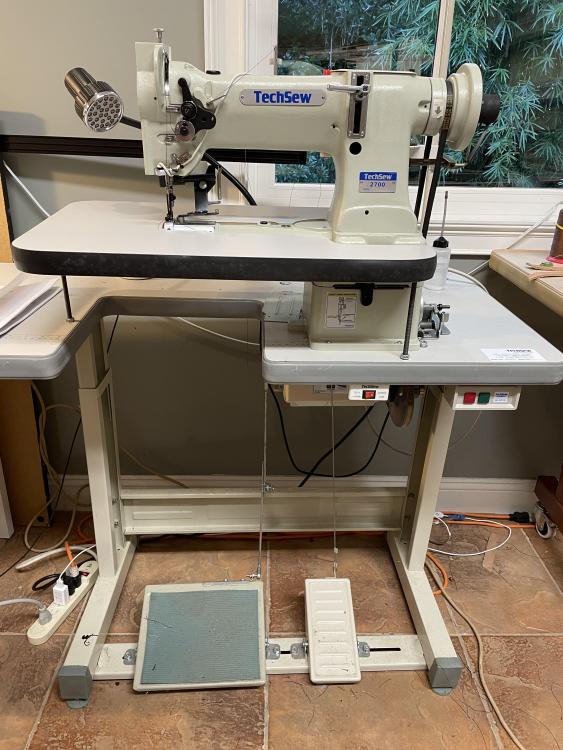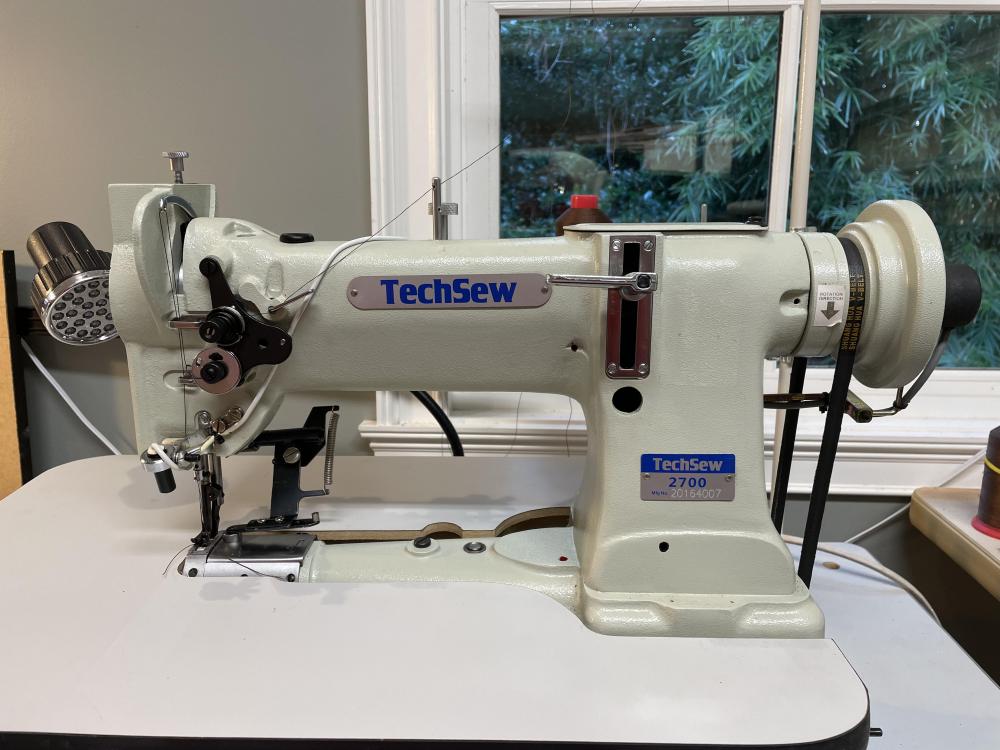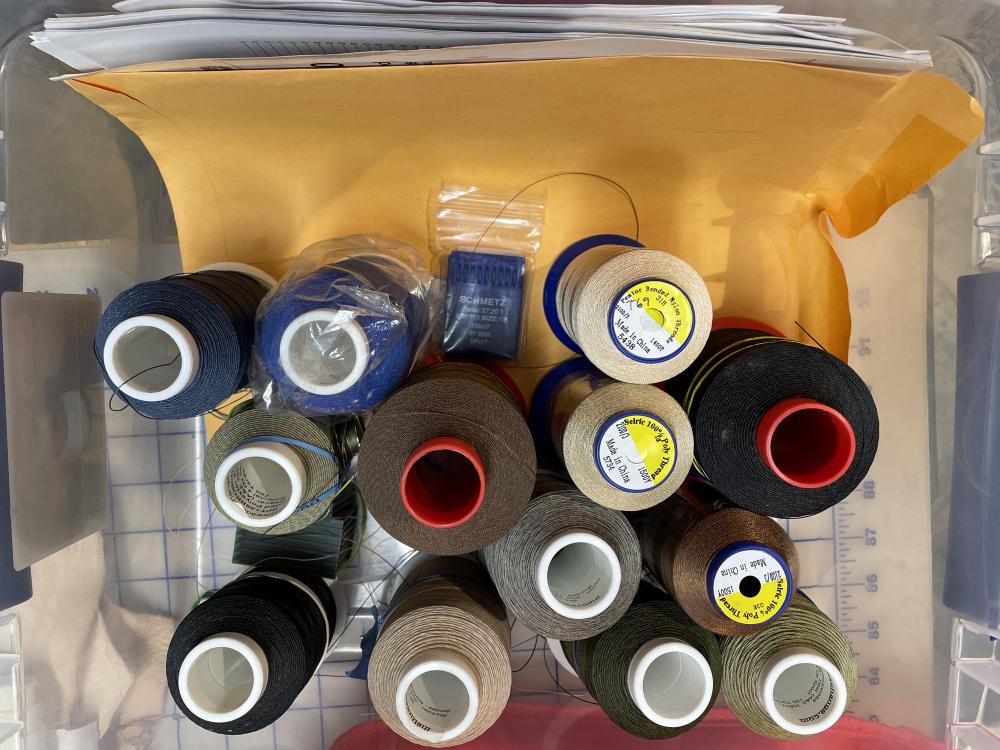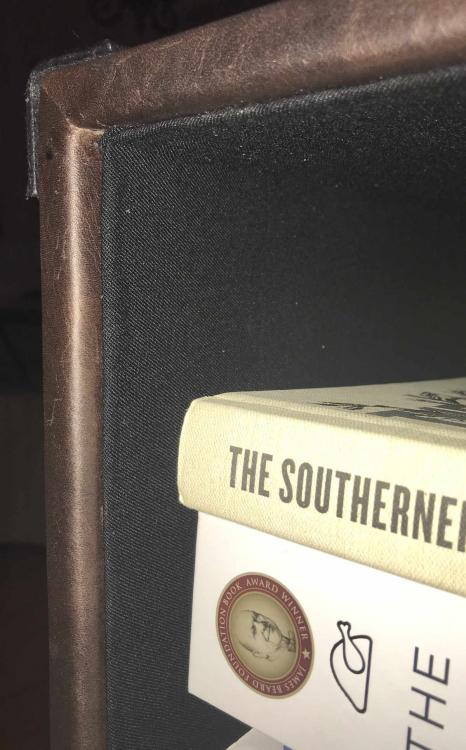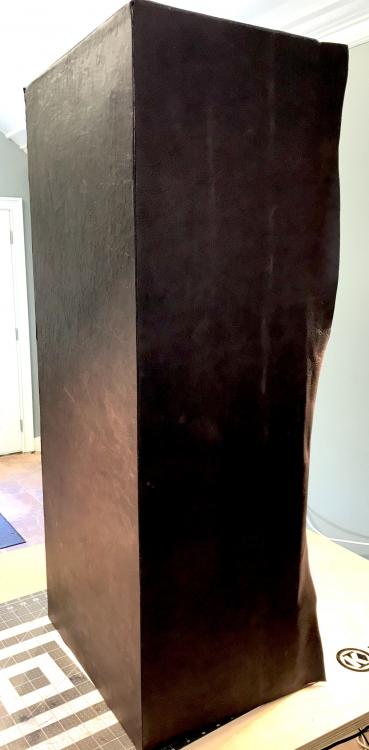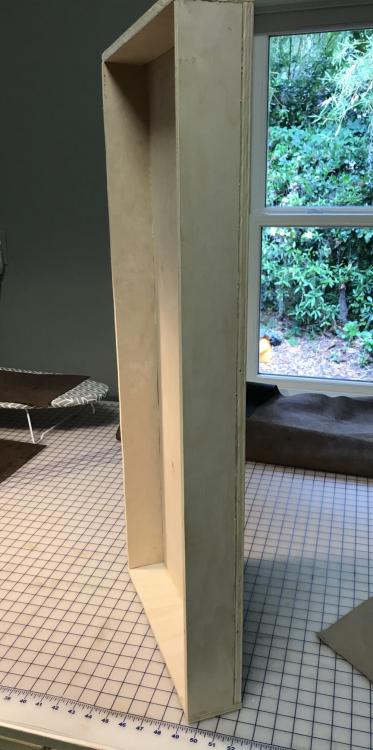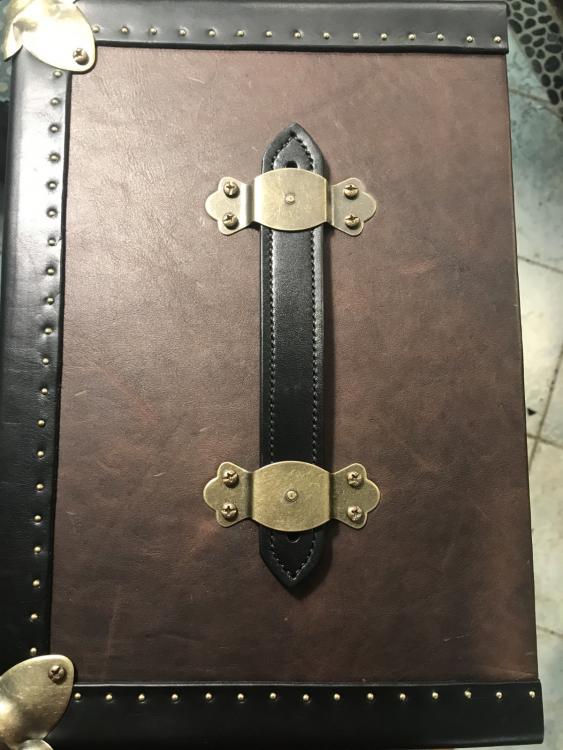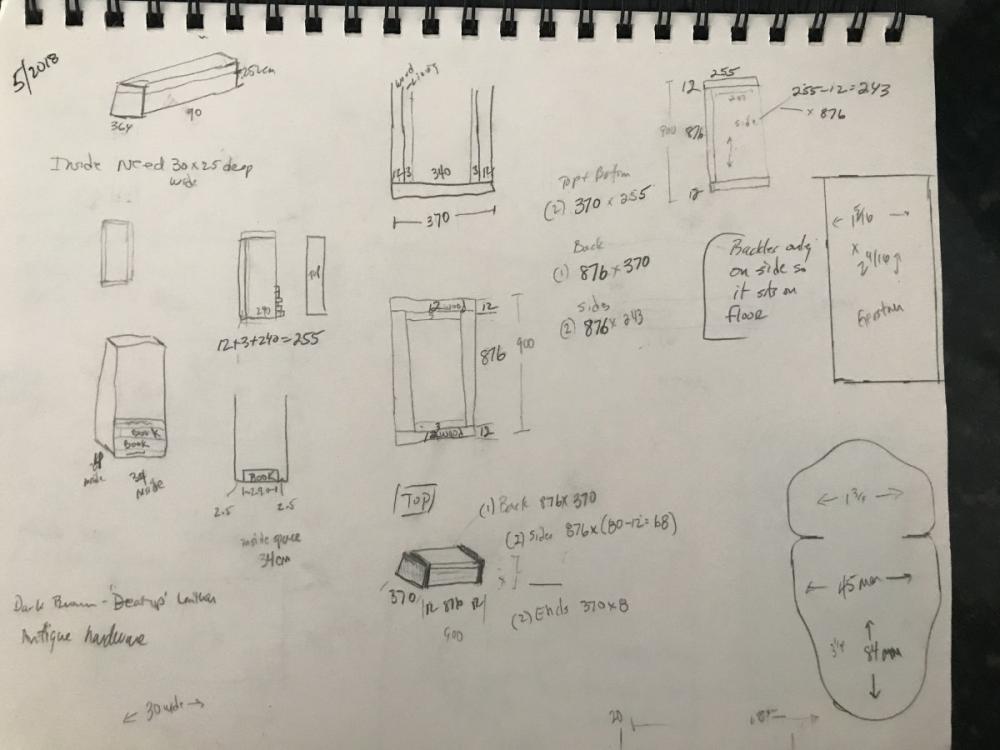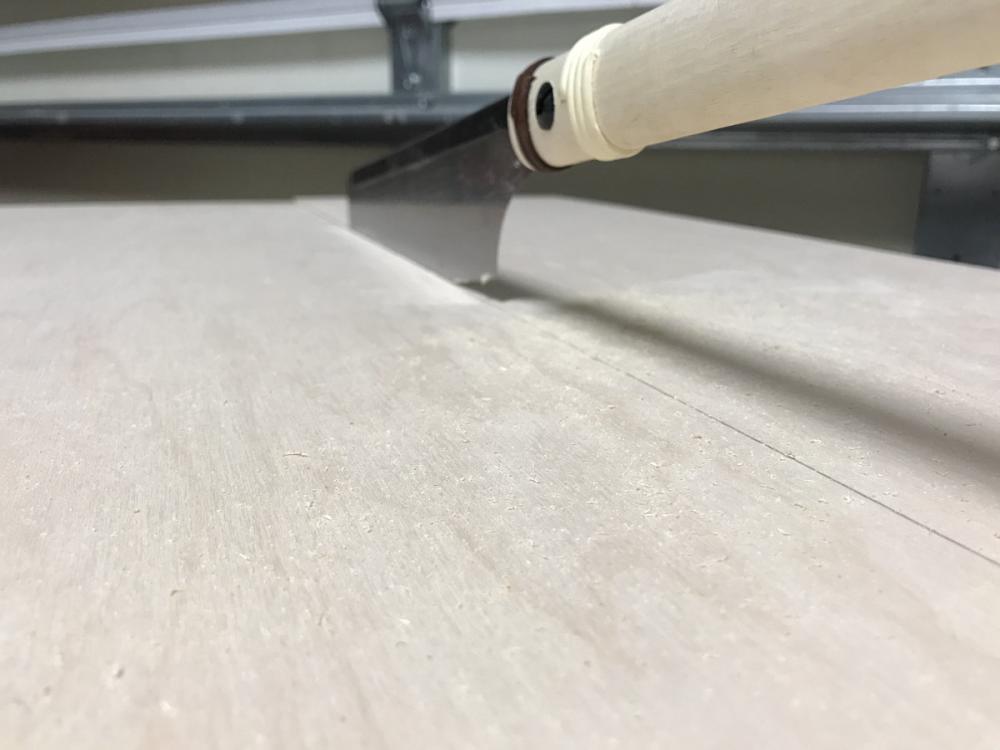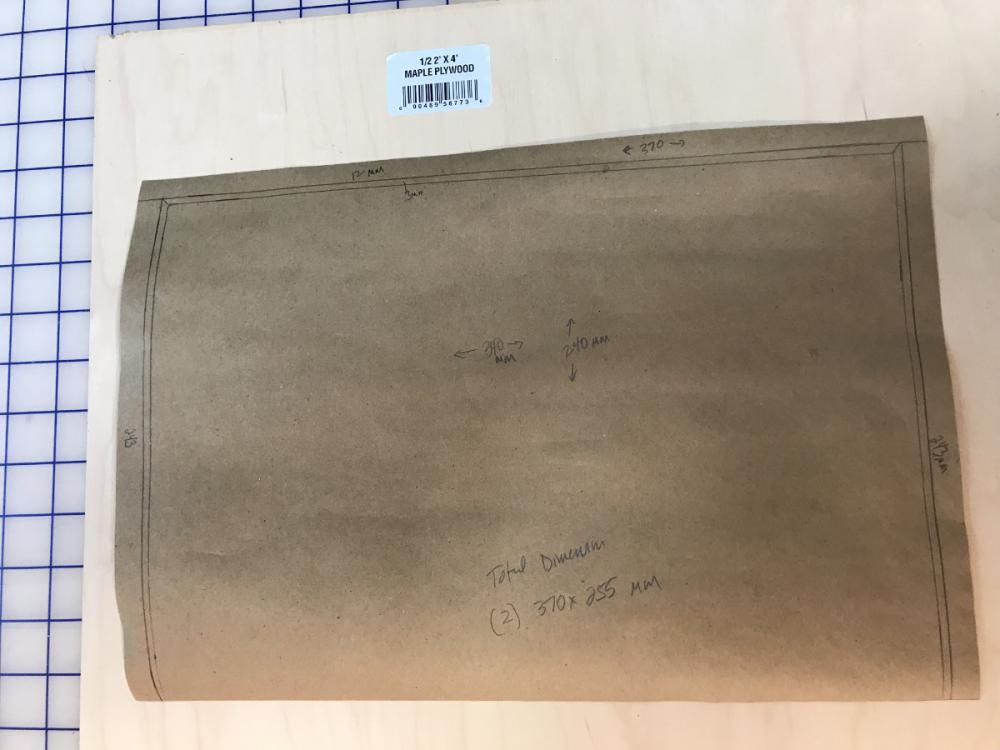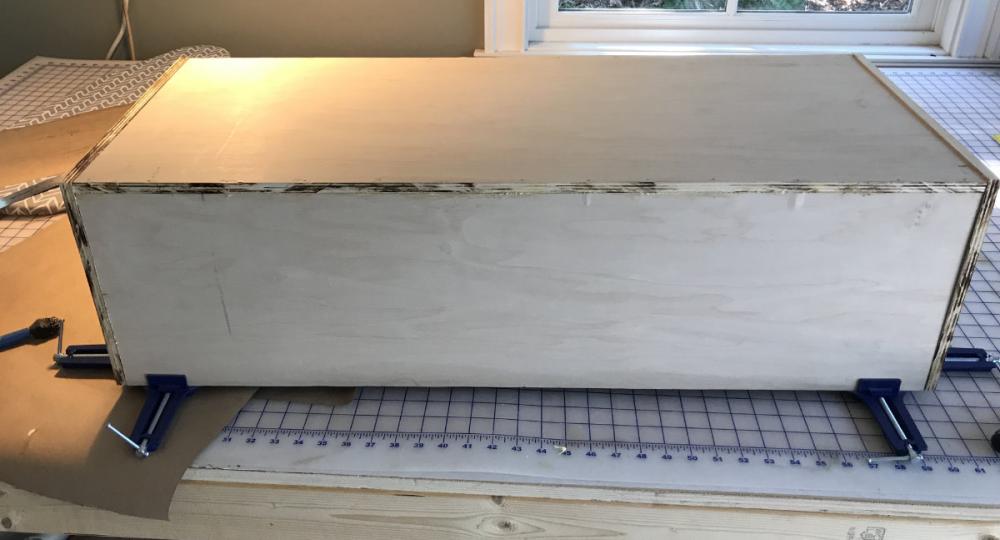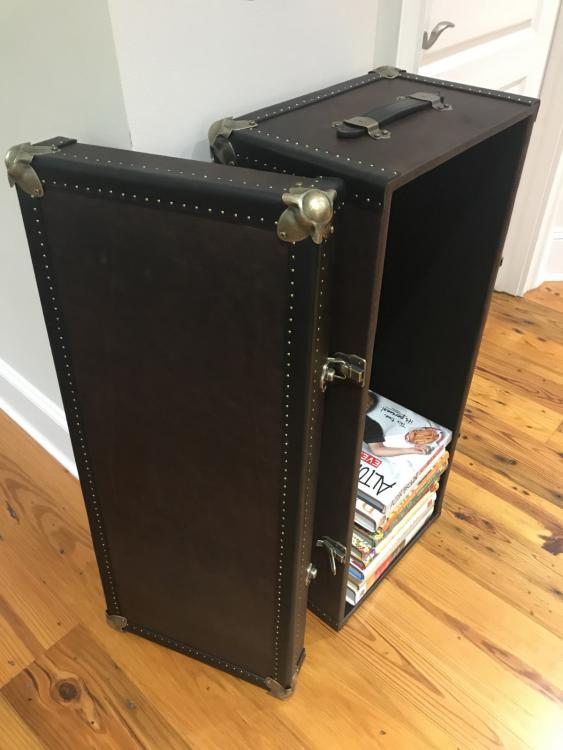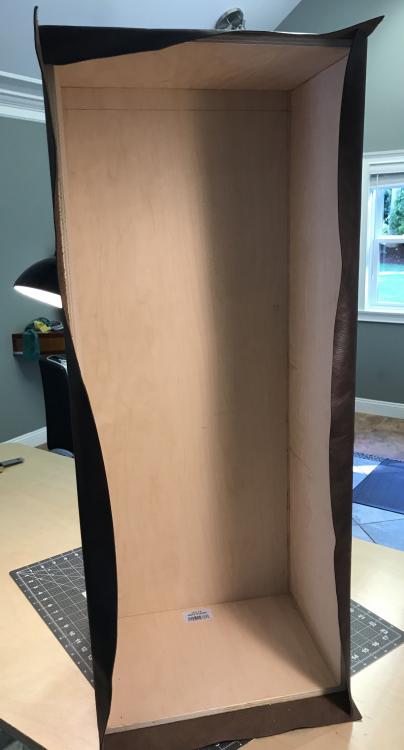
terryHHI
Contributing Member-
Posts
45 -
Joined
-
Last visited
Content Type
Profiles
Forums
Events
Blogs
Gallery
Everything posted by terryHHI
-
Sold, thank you for your interest.
-
Sold. Thank you!
-
We are downsizing and I’m selling my Regad M3000 electric creasing & edging tool and tips. Tips included: F2, FN3, L2.5, FNR3 and wax spatula. $450 plus shipping. Also selling Techsew 2700 sewing machine and Cobra NP4 bell knife skiver. Willing to negotiate if you’d like all 3. Thank you, Terry
-
We are downsizing and I need to sell my COBRA NP4 bell knife skiver. Includes stand, and built-in sharpener. I purchased in 2018 and have used it little. $850. Pickup only - Hilton Head Island, SC Also selling Techsew 2700 sewing machine and Regad M3000 electric creasing & edging tool. Willing to negotiate price if you’d like all 3. Message or terrylmillard@gmail.com Thank you, Terry
-
Hi Jay, we love Hilton Head. It’s a great place to hang out. The 2700 was too fast for my sewing skills before I installed the speed reducer. Now I can go slow enough that even I can get a straight line. I’m also selling a Cobra NP4 bell knife skiver and a Regad M3000 electric creasing & edging tool. If some is interested in a 3, we can negotiate a price. Thanks, Terry
-
We are downsizing and I need to sell my Techsew 2700 Pro. This is a cylinder bed, compound walking foot, industrial sewing machine for light and medium leather. It will sew up to 3/8” thickness. It has a reinforced U table, Smartservo-NP motor (needle positioning), reverse stitch, TS-28 LED work lamp, TLG laser guide, swing-down roller guide, flatbed table attachment, bobbin winder and thread stand. I added the speed reducer pulley which adds torque and allows you to gear down sewing speed from 1/3 of your machine's rated speed The cylinder arm is 10.5 inches long and 2.5 inches in diameter. Also included are several different presser feet, premium needles and several spools of thread. I purchased it from Techsew 2016 and have used it little. I generally prefer hand sewing. $1,500. Pickup only - Hilton Head Island, SC Message or terrylmillard@gmail.com
-
I have several of the Studio Tac books in Japanese. I don’t speak Japanese, but I found the books useful. The pictures are show processes and techniques in detail. For the most part, the pictures tell a fairly complete story. I’ve refined several of my techniques based on the Studio Tac books. I also use Google Translate to translate the text to English. The Google Translate app lets you to take a picture of the text and it will translate into your language of choice. I’ve found the translations are helpful but not perfect. Another thing I like are the patterns. I haven’t made anything directly from their patterns but I’ve used pieces, like tabs or straps, to make select pieces for things I’m making. Another book to consider is “The Leatherworking Handbook: A Practical Illustrated Sourcebook of Techniques and Projects” by Valerie Michael. It was the first book I purchased when I started leatherworking and I found it useful.
-
What to use for stiffener - bonded leather or splits?
terryHHI replied to terryHHI's topic in How Do I Do That?
Scooby - a layer of veg tan might be the simplest and effective solution. I may have been overthinking what I need. baroness and LatigoAmigo - thanks for fabric interfacing ideas. The heat bonded sounds interesting hwinbernuda - the lead is heavy,, I like the board idea. The lead is typically wrapped around a pool noodle ( foam tube) or PVC or cardboard tube to keep it from flattening out and potentially cracking. I’ll try a small piece of plywood in the bottom of the prototype I’ve made to see how it works. Thank you for the ideas. A fresh set of eyes makes it easier to see some creative solutions. -
My daughter-in-law is a cardiology nurse and wears a lead apron and lead jacket for procedures due to the use of X-ray machines to place the leads into the heart. She travels between several hospitals and needs a bag to carry her “leads”. The leads are rolled instead of folded to reduce the chance of cracking. I’ve designed a bag that’s a cross between a duffle bag and a yoga mat bag. I’m using Italian Saffiano leather for the outside and goat for lining. Both leathers are 2/3 oz (about 1 mm each) and fairly soft temper. I’d like to add something between them to make the bag a little more firm. I have bag stiffener from Springfield Leather but I think that will make it too stiff. I’ve read about people using bonded leather or splits but don’t have experience with either? Any ideas? Thank you.
-
Leather temper is a source of regular discussion in my house. I made my son a backpack out of 5/6 Wickett and Craig English Bridle. It seemed a little stiff when first made. After a year of use it has a beautiful soft temper. I bought W&C 5/6 harness and had them stake it 4 times to soften the leather. I think staking is the process of running the leather through a set of roller to loosen the fibers. I’ve made several totes and a doctor bag with this leather and I love it. Bag below has been used regularly for about a year. It shows some wear mainly from sliding it under airplane seats. I’ve made a couple messenger bags with 7/8 W&C harness, not staked. I was going for a more rustic style and the heavier leather worked great. The 7/8 I used would be too thick/stiff for a duffle bag of the style you showed. You can buy a single side from W&C and have it split and stake to your specifications. I’d guess the Buffalo Jackson leather has been tumbled to soften the leather.
-
Hobo Handbag / Purse
terryHHI replied to Leebroox's topic in Purses, Wallets, Belts and Miscellaneous Pocket Items
Great bag! Love the design. What are you using for the large silver buttons (rivets) on the outside? -
Your question made me think of another site I’m looking forward to watching and learning from. Equus Leather, Charlie and Dawn Trevor, have several great videos on You Tube. They have a Kickstarter going to raise money to film the making of a wood framed attaché case. If you pledge money, you get access to a private Instagram account showing the filming and build process and other incentives depending on how much money you pledge. I’m excited to watch the construction of the attaché. https://www.kickstarter.com/projects/equusleather/equus-leather-film-step-into-our-workshop
-
Hi niakulah, I’ve watched countless free YouTube videos. You Tube videos got me started with leatherworking. Like you, I subscribe to Nigel’s videos and have learned from them. I started subscribing to Leather Masterclass last week. I’ve watched the stitching, blade work and edges part 1 videos. Leather Masterclass instructor, Philip Jury is a great teacher. He explains the processes he uses, he explains alternatives, and his videos are well produced. I like the videos and I’m learning information and techniques I haven’t found elsewhere. For me, both subscriptions are worth the investment. Let me know if you have any questions.
-
Thanks everyone. It turned out better then I expected. I’m thinking about trying a hard sided suitcase next.
-
Question about lining a leather bag
terryHHI replied to panchoskywalker's topic in How Do I Do That?
I would try to find a solution that doesn’t include a zipper. Here are some ideas I would consider if I were making the bag. apply glue (Loctite or super glue) to the threads to keep them from coming apart. glue the Chicago screw to the canvas and then glue another small piece of canvas on the inside to cover the back of the screw. This would work to “lock” the back of the screw. Tighten the screw as tight as possible, assume the chance of it coming unscrewed is low. If it comes apart in future deal with it then. Another option is to put the screws through canvas and lining. In my opinion, the screws would look fine on the inside. -
Hi Gary, See my response to YinTx about process. I think was writing that when you were writing this question. I found that trying to glue entire piece, wrap and trim all in one process created a mess. I went back and watched some videos and realized trunk makers did it in two steps. 1. Glue outside. 2. Miter corners and glue top edge and inside. Having outside firmly in place made everything much more manageable. The lining is wool glued and wrapped around bag stiffener. I made a bottom piece and glued it in first. Then I made long sides and attached them. Last, the end pieces were added. Lining overlaps the leather on inside and comes up to about 1 cm from edge. And thanks for compliment. It was a fun project.
-
Hi YinTx, thank you and yes, leather was glued. I glued to outside first and let it dry. Then I glued flap, stuck the leather to top edge of box, trimmed the corners and then stuck the leather to inside.
-
5. Body pieces glued. 6. Lid construction 7. Handle
-
-
Here are some build images to give you an idea how I built it. 1. The plans will give you an idea of the size and pieces. This is as close to a “plan” as I get. On the right side you will see outlines of hardware. I was trying to understand the sizes. 2. Bought a Japanese saw to improve my cuts 3. Bottom template to understand size. Laid it in kitchen floor to make sure size made sense. 4. Main body glued.
-
I’ve wanted to try making a trunk or hard sided suitcase for some time. My wife suggested a trunk for her cook books. Sure, sounds fun. I used 1/2 inch maple plywood for structure. Leather is chocolate pull-up from Waterhouse Leather and W&C English bridle for black trim. Hardware from Ohio Travel Bag and Brettuns Village. A bunch of brass escutcheon pins and black wool fabric for lining. Since I’m not a woodworker, hand sawing and assembling a “square” trunk took some time and practice to get it where I wanted it. Primarily watched You Tube videos for ideas on how to construct, cover and finish a trunk. Couldn’t find many written resources so I created a document with screen shots of the build process from a variety of videos. Not too scientific but gave me some ideas on how to proceed. I’m happy to share it if anyone has an interest. I am happy with how it turned out. There are a few things I’d do different on the next one but mostly little stuff to make build easier. Most importantly, my wife loves it.
-
I’ll play. I was made a pattern for a backpack. During the build process I decided to increase the size of a pocket by 2 cm. I changed the dimensions on my plans except I missed one place. I made the pocket piece and realized I missed the change. Work on something else for a couple minutes. Go to plans. Get dimensions. Cut piece. 2 cm short again. How is this happening? Go to plans confirm I have right dimensions. Yep, exactly the size per plans. Now I have two short pieces. Finally realized I had changed the plans but missed changing the number in one place. Cut piece again. By this time the wrong dimensions were firmly engrained in my brain. Cut it short again. Now I’m sitting at bench and laughing out loud and looking at my 3 mistakes. 4th time was a charm. Do you need a pocket or 2 for your holster?
-
Leathersmyth - thanks for the advice. I’ve seen way too many feed sacks with chain stitch tops. I didn’t realize that’s how the linings where attached. I’ll dig around and see if I can find the end.
-
leathersmyth - thanks for the insight and information. I haven't decided how far I want to go with restoration. I'm a little concerned that taking it apart may cause more issues then expected. My current thinking is to restore the leather and see how it looks and then make a decision on how far to go. The thread is yellow. I'll be hand sewing as much as possible. One issue is finding a way to open the lining and get inside the bag. dirkba - my wife gave me similar advice - embrace the age and unique old bag and don't try to over-restore it. I looked more closely at black areas and it looks like it could be printers ink. I'll post pictures and info on what I'm doing during the project. chrisash - I think you are right, I wasn't sure exactly how to describe it. Today I'm starting on cleaning lining with Woolite, a toothbrush and a sponge and see how it goes. Thanks for your help.


